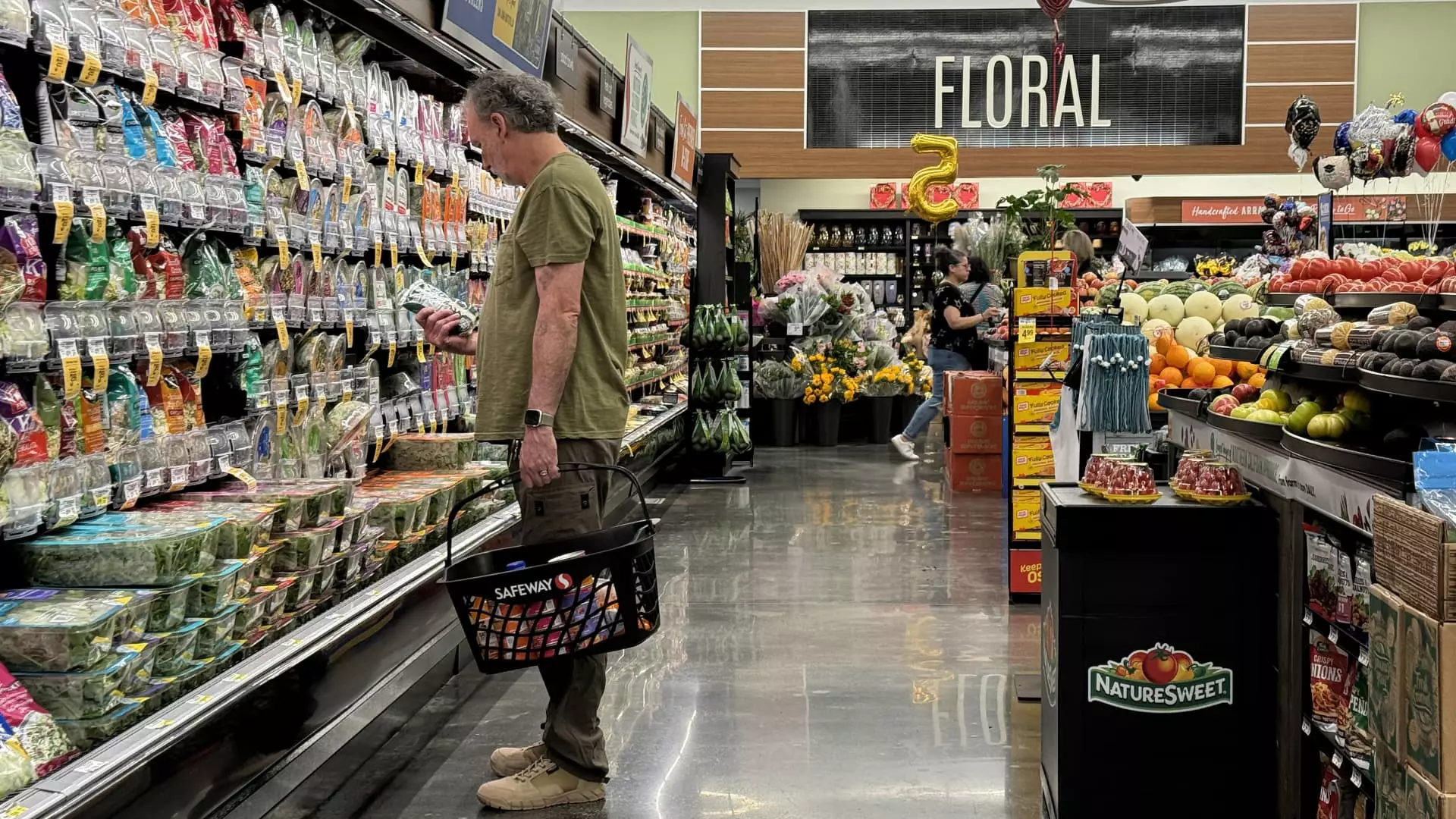The latest government inflation data indicates a slowdown in the rate of price increases for food items. Despite this, the majority of American consumers still feel the burden of high grocery prices. Over the past few years, 80% of Americans have noticed a significant increase in the cost of groceries. According to a report by Intuit Credit Karma, grocery prices have surged by 25% since the beginning of the pandemic. This has led some consumers to make sacrifices in order to afford basic necessities. Shockingly, 28% have had to forgo paying rent or bills to cover grocery expenses, while 27% have occasionally skipped meals. Furthermore, 18% have considered applying for food stamps, and 15% have turned to food banks for assistance. Despite these challenges, 53% of consumers feel they earn too much to qualify for government aid, yet they still struggle to meet their basic needs.
While grocery costs have significantly increased, other essential expenses have also seen spikes. Apart from food, 51% of consumers have experienced a rise in gasoline prices, 39% have noticed increases in bills like cable, electricity, and internet, and 27% have observed a surge in housing costs. Additionally, dining out expenses have also gone up for 27% of respondents. The survey conducted by Qualtrics on behalf of Intuit Credit Karma highlights the broader financial strain faced by consumers in various aspects of their lives.
The escalating cost of groceries has garnered attention from policymakers, with Senator Elizabeth Warren expressing concern over ongoing price hikes even after the end of the pandemic. In response to consumer fatigue, several retailers have announced initiatives to lower grocery prices. Target plans to reduce prices on thousands of items, including meat, milk, fruits, and vegetables. Amazon Fresh is set to cut prices on both online and in-store purchases, while Walmart has increased its rollbacks and sales on groceries and other products. These efforts aim to alleviate financial pressure on consumers struggling to afford basic necessities.
For individuals facing challenges in meeting grocery expenses, seeking assistance from local food banks can provide relief. Additionally, adopting new shopping strategies may help mitigate the impact of rising costs. By making smarter purchasing decisions, such as opting for cheaper food categories and exploring cost-effective alternatives, consumers can manage their grocery budgets more effectively. Embracing loyalty programs, purchasing store or generic brands, buying in bulk, and exploring discounts through coupon sites and apps are practical ways to save money on groceries. Moreover, being mindful of payment methods at checkout, such as utilizing cash-back rewards from credit cards, can offer additional savings opportunities.
As the prices of essential goods like groceries continue to rise, consumers are facing heightened financial challenges. However, by implementing cost-saving strategies and making informed purchasing decisions, individuals can navigate the current economic landscape more effectively. Managing grocery expenses wisely, exploring discounts and rewards, and seeking assistance when needed are crucial steps towards alleviating the financial strain caused by escalating prices. In a time of economic uncertainty, empowering consumers with practical tools and resources is essential in promoting financial stability and resilience.

